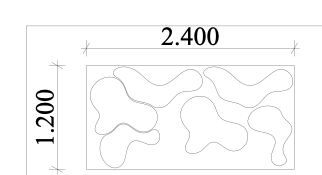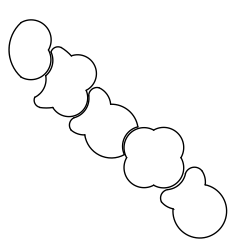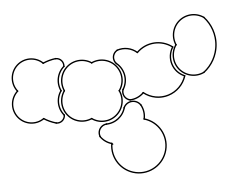- christiane g
- Apr 18, 2023
- 1 min read
Updated: Aug 10, 2023
Discuss,Compare and Finalise
Dingile's Design
My Design
I designed the chairs for our project in way that the audience can put them in multiple places and the chairs still connect. I wanted to create a puzzle feature out of it whilst still being inspired back to our primary research of the fluid lines. It will be different heights and the widths are definitely very different depending on the piece. We hope to get this CNC cut as it is 18mm thick OBS board, arriving on the 16/11/22.
Different Iterations






























